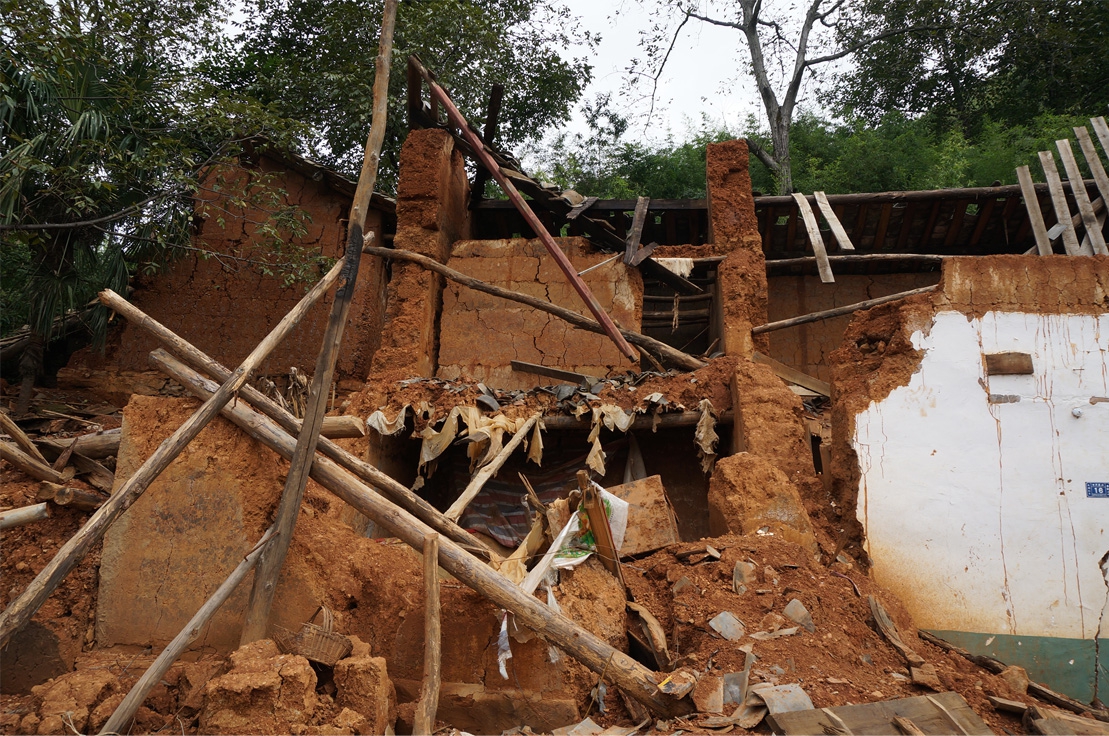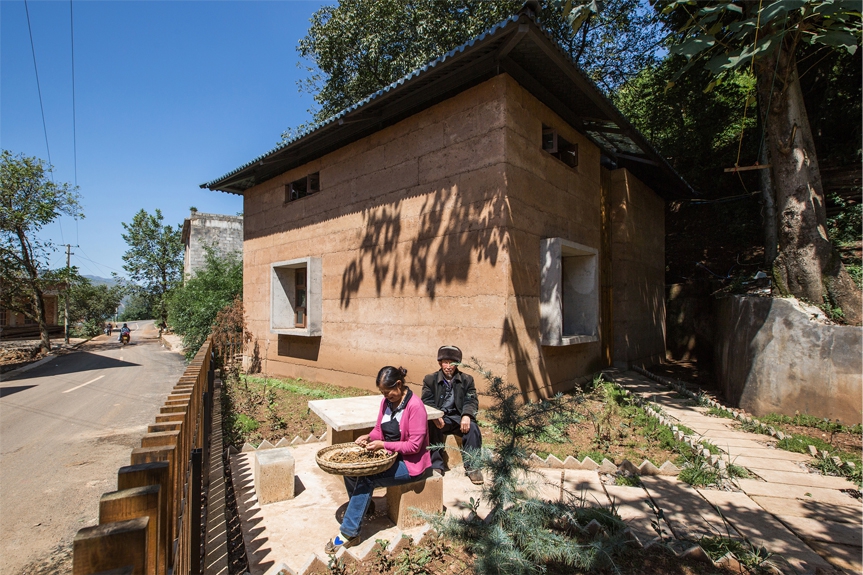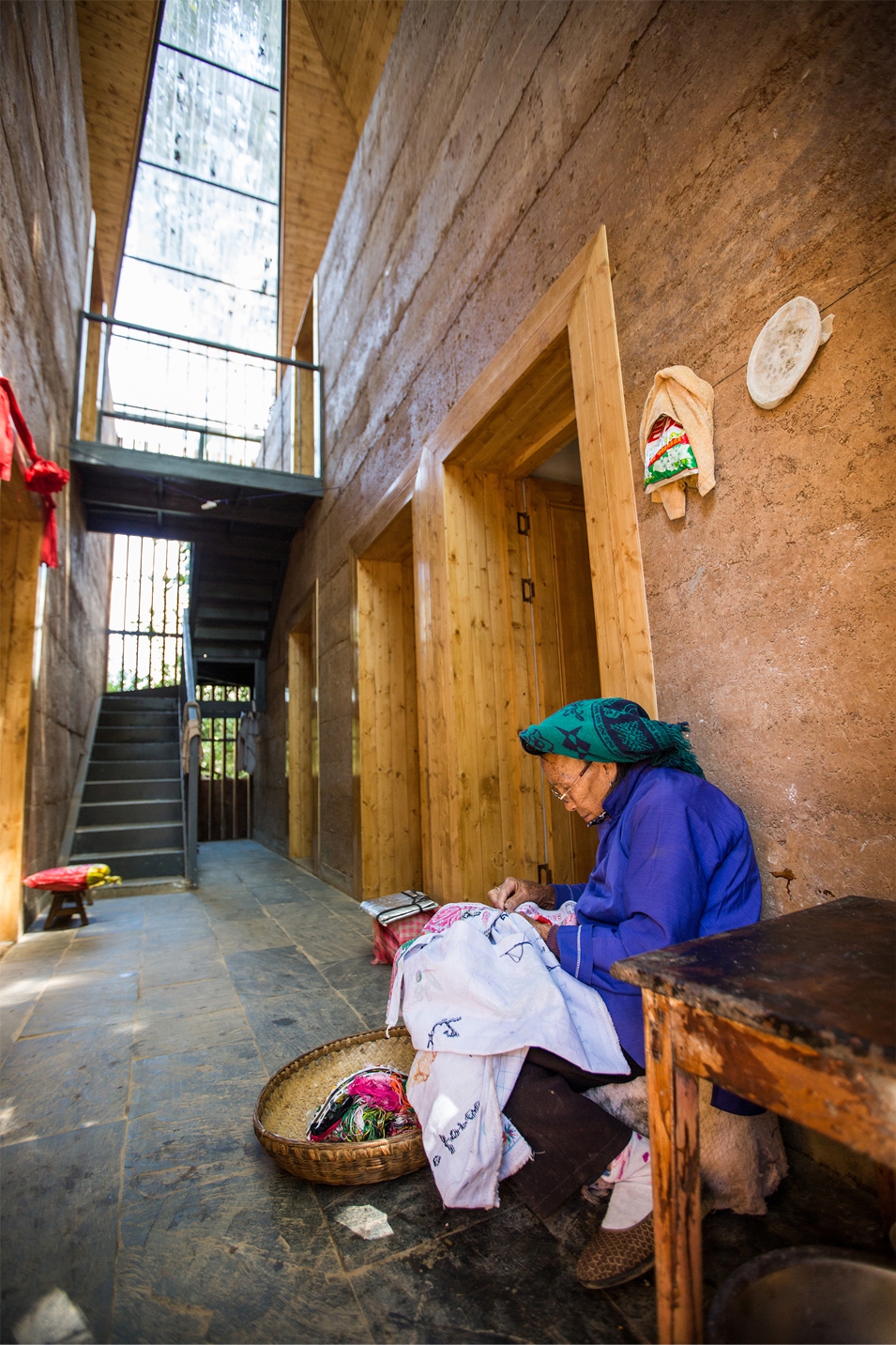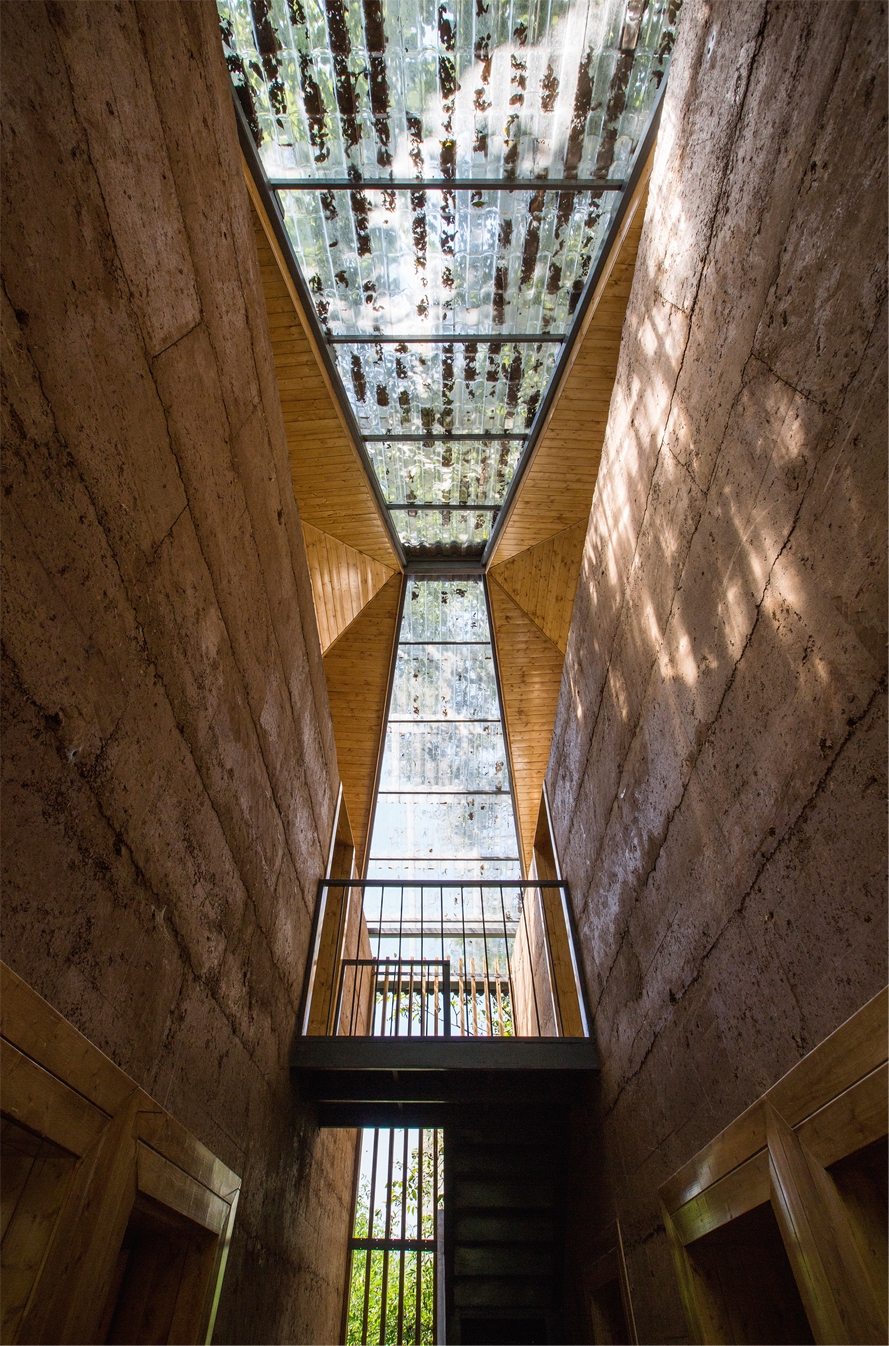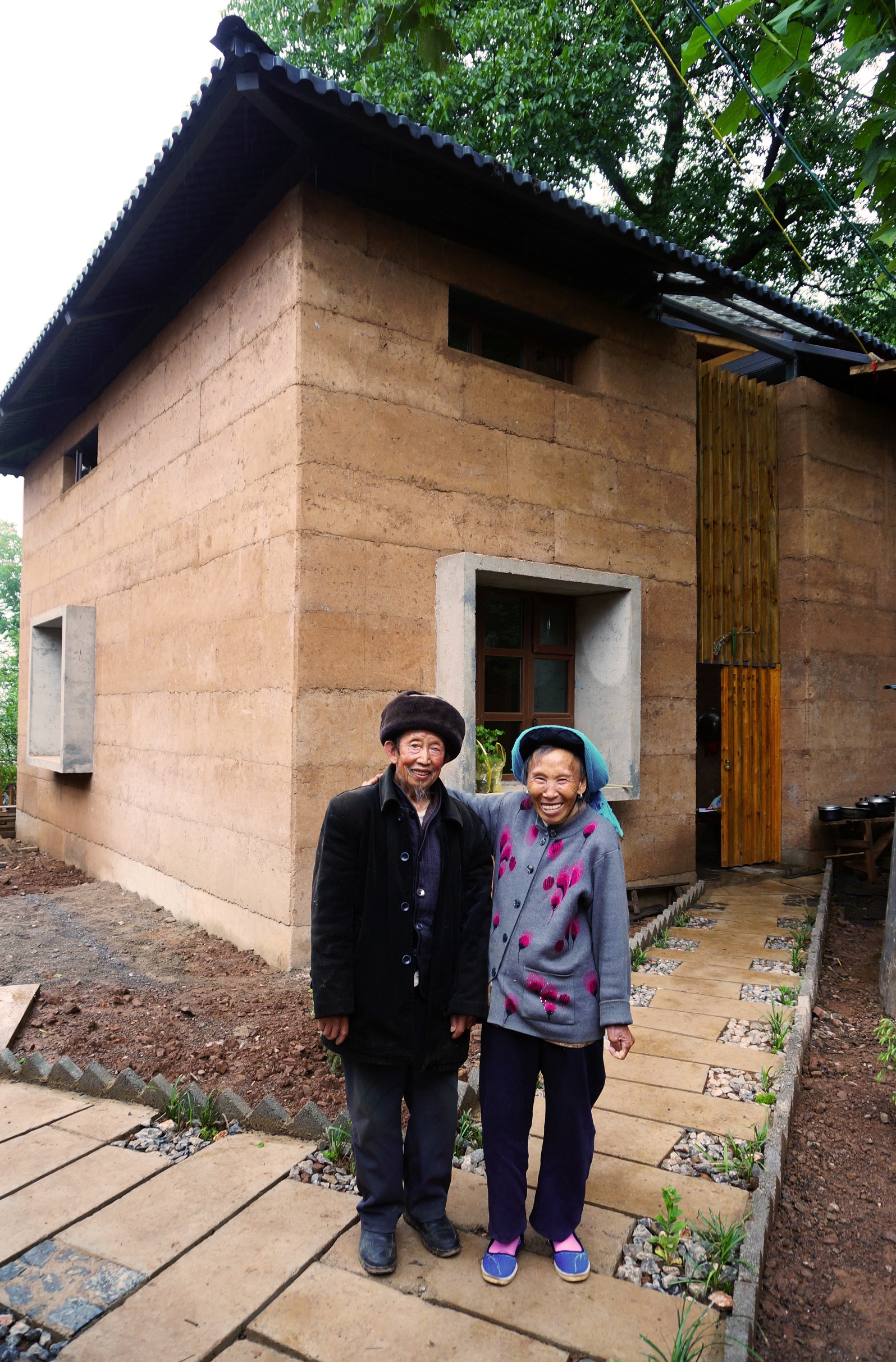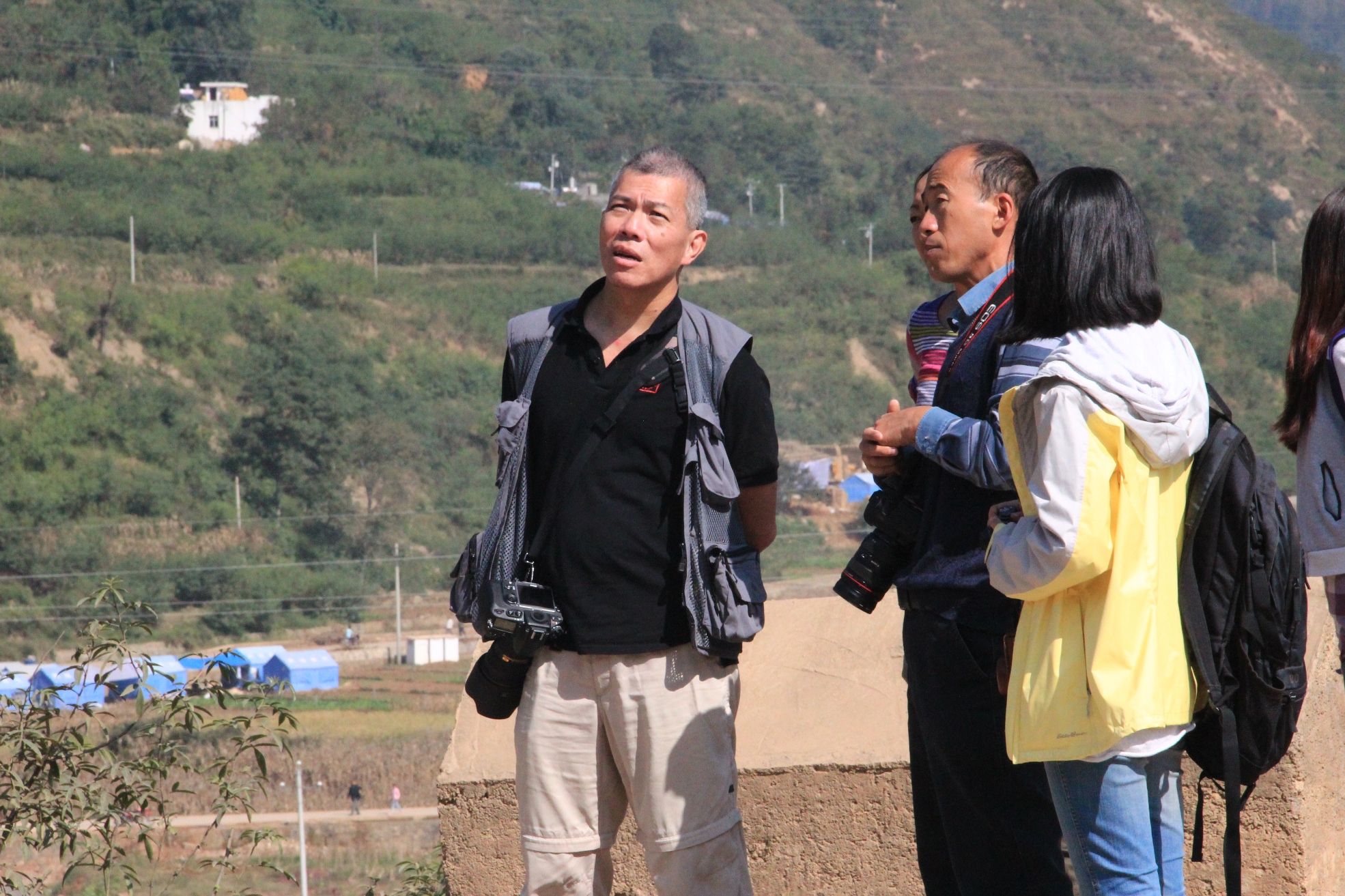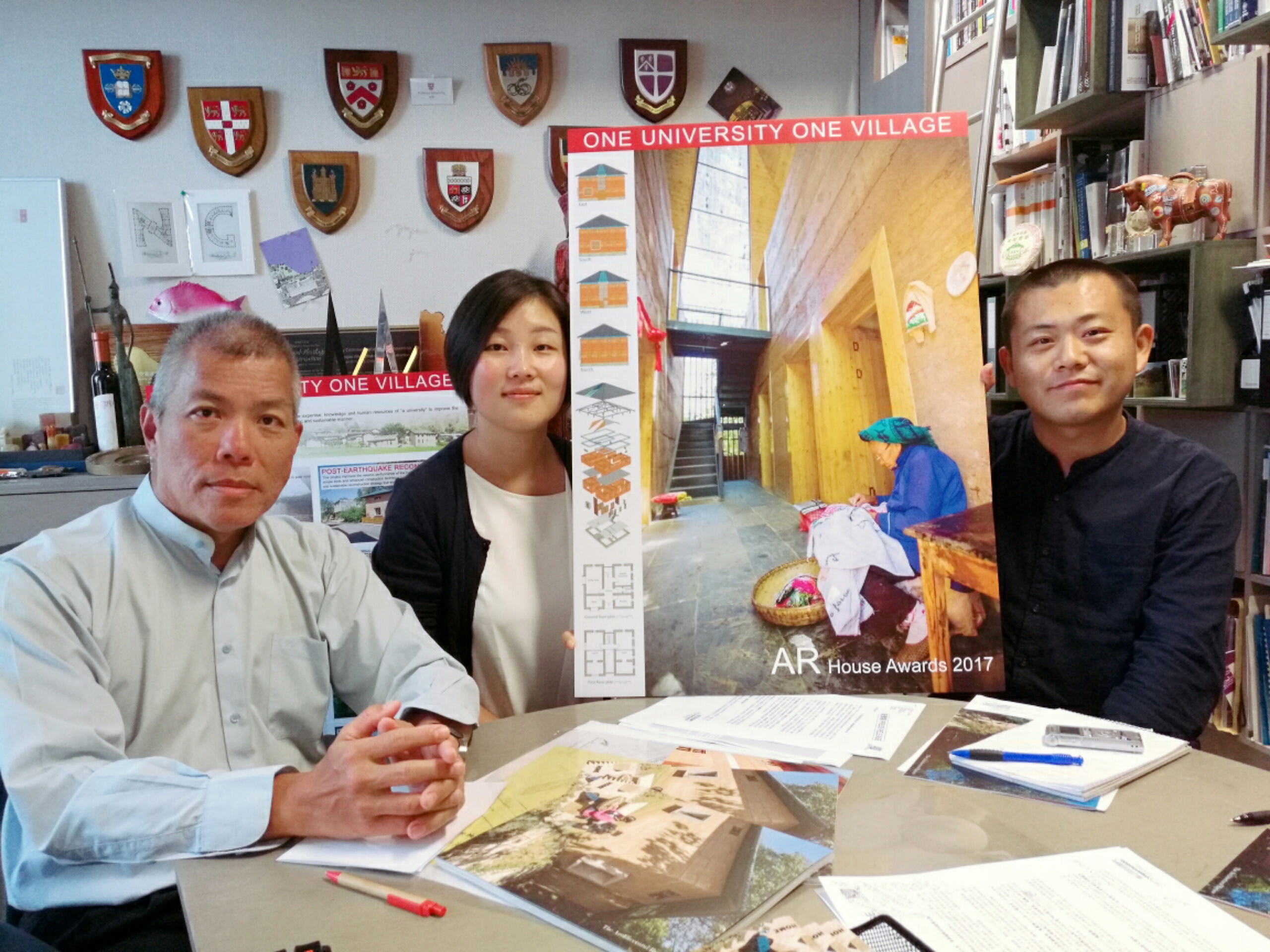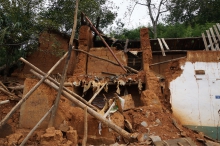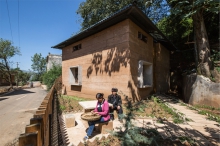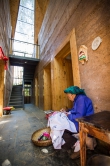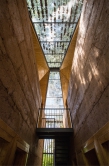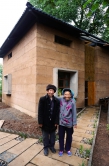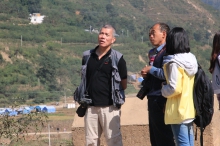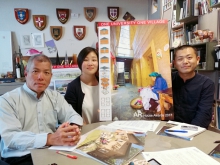CUHK
News Centre
CUHK’s Sustainable and Anti-seismic Earth House Won International Architectural House Award
The One University One Village (1U1V) team, led by Prof. Edward NG, Yao Ling Sun Professor of Architecture at The Chinese University of Hong Kong (CUHK), has built a prototype house for an aged couple in Yunnan to provide villagers a safe, economical, comfortable, and sustainable post-quake reconstruction strategy that they can afford, own, and pass on. This project has recently won the Architectural Review (AR) House Awards 2017 which attracted 250 entries from all around the world. It has also been shortlisted for the World Architecture Festival 2017 Awards, ‘the Oscars of architecture’. These two awards will be presented in Berlin in November.
In August 2014, a magnitude 6.1 earthquake hit Ludian County in Yunnan Province. In total, nearly 81,000 homes collapsed and 617 people died. In group 12 of Guangming Village, with a population of 61 families, 80% of the old buildings were local rammed-earth constructions, all of which collapsed. The villagers lost confidence in traditional rammed-earth buildings and rebuilt in brick and concrete. However, the price of construction materials rose seriously and became unaffordable for most local villagers. The poor thermal performance of the brick-concrete buildings and the lack of technical craftsmen also made it difficult for the villagers to rebuild a safe house.
In October 2014, Prof. Edward NG, Dr. Li WAN and PhD student Xin’an CHI of CUHK, in collaboration with Prof. Emily SO of the University of Cambridge and Prof. Wenfeng BAI of the Kunming University of Science and Technology, launched a post-earthquake reconstruction demonstration project to develop an anti-seismic, low-cost, comfortable and sustainable dwelling. They conducted research on the shortfalls of traditional rammed-earth buildings to formulate a new rammed-earth system. After repeated tests, the team completed a 148m2 two-storey, new, rammed-earth house in four months. The construction cost of the new earth house was 940 HKD/m2, which was a saving of 40% compared with the cost of brick-concrete buildings in the village (1,400-1,600 HKD/m2).
The owners of the new house are the 80-year-old parents of Qingguang YANG, the main contractor in Guangming Village. The old couple had been living in a tent for 12 months because they were unwilling to move to their sons’s brick-concrete house. The new house built for the elderly couple by Professor NG’s team regained villagers’ confidence in earth buildings and demonstrated how the living conditions can be improved in rammed-earth homes.
Traditional house with anti-seismic, comfortable and sustainable features
Rammed-earth construction has a long history in China, particularly in rural Yunnan. Mud was the main material used in traditional architecture because this component is inexpensive and accessible as well as exhibiting impressive thermal performance. The post-earthquake reconstruction even reused the materials from damaged buildings and avoided the long distance transportation of construction materials. This shortened the construction time and saved on costs. The components of the wall are well adjusted, using clay, sand, straw, and cement (3%). Steel bars and concrete belts are added to the wall to improve structural integrity. The seismic performance of the rammed-earth building is significantly improved and can meet the local seismic codes of fortification intensity 8.
In consideration of the daily life of the elderly couple, the living and semi-outdoor spaces, with good thermal and daylighting performance, provide a comfortable and artistic living environment for them. Double-glazed windows and an insulated roof are used to improve the thermal performance of the building and to reduce energy consumption. Outside the house, there is a garden where grass and trees have been planted, providing a cool, shaded area to work and chat.
Mr. and Mrs. YANG are both happy with the new house. Mr. YANG said, ‘I really enjoy living in this house because it is warm in winter and cool in summer. It is bright and clean. Now I can devote more time to doing my bamboo-weaving work because I feel comfortable when I am doing it in the atrium. And I am so happy that my grandchildren like to stay in this house during the holidays.’
Engagement of villagers
The tools and the technology of the new rammed-earth house are easy to learn. Qingguang YANG and local residents were fully engaged in the entire process of reconstruction. They can easily improve and maintain the houses in the future, and utilize this technology as a means of earning their livelihood. It is the way the CUHK team helps the villagers to activate local economy and build a sense of belonging.
Qingguang YANG said, ‘I want to thank the project team for designing and building such a nice and comfortable house for my parents. I am also grateful that my wife and I can join the construction and training programme so that we can earn money to support our family without going too far away now. A lot of my neighbours visited the house and also wanted to build one for themselves.’
The judging panel of AR House Awards appreciated the considered details of the architecture in reflecting a deep understanding of local society and offering not only a local and cost-effective construction template but also a home of charm, in which the owners have real pride. Other villagers admire the new, anti-seismic rammed-earth demonstration houses and are now interested in switching back from their concrete and brick houses.
Prof. Edward NG said, ‘This award recognizes the efforts of the CUHK team on rammed-earth research. The local traditional rammed-earth construction method and lifestyle are protected by improving its building performance with a simple strategy and local materials.’
A new rammed-earth construction standard to support rural development in southwest China
Many impoverished villages in southwestern China are located in mountainous areas where transportation is inconvenient, development lags behind, and resources are scarce. Basic necessities are often short. The One University One Village Rural Sustainable Development Assistance Programme (www.1U1V.org) was launched by Prof. Edward NG and Dr. Li WAN of the School of Architecture, CUHK in 2014. The idea is to gather professional knowledge and manpower from one higher institution to help improve the environment and livelihood of one village in its living conditions, public health, education, and economy, strategically, systemically and sustainably.
Prior to this project, from 2005, Prof. Edward NG led the team and completed ‘A Bridge Too Far’, ‘A School to Learn’, ‘Maosi Ecological Demonstration Primary School’, and ‘Wu Zhi Qiao’ bridge projects and post-earthquake village reconstruction demonstration projects. They have received the Royal Institute of British Architects (RIBA), UNESCO Asia-Pacific Awards for Cultural Heritage Conservation, Terra Award, The Green Building Award and other well-known professional awards at home and abroad.
The CUHK team hoped that, at a subsequent stage, this anti-seismic earth building system will be applied to more rural projects in southwest China. This strategy will also provide guidance for local reconstruction policies and rammed-earth building standards. The team has now launched a new rammed-earth architecture project at Dabaiyi Village in Yunnan. They plan to set up an Earth Building Research & Development Centre in Kunming for research and practical study. In addition, they will carry out long-term artisan training programmes and prepare a construction manual to teach the local villagers the new seismic earth construction technology.
About the Architectural Review (AR) House Awards
The AR Housing Awards celebrate exceptional residential projects with multiple dwellings. Over 250 entries were received from around the globe this year. Out of the 15 homes shortlisted by the judging panel, six of them made it to the final round and were visited by independent critics before the judges decided on a winner. https://www.architectural-review.com/awards
The CUHK team built a prototype house for an aged couple with innovative rammed-earth building system.


